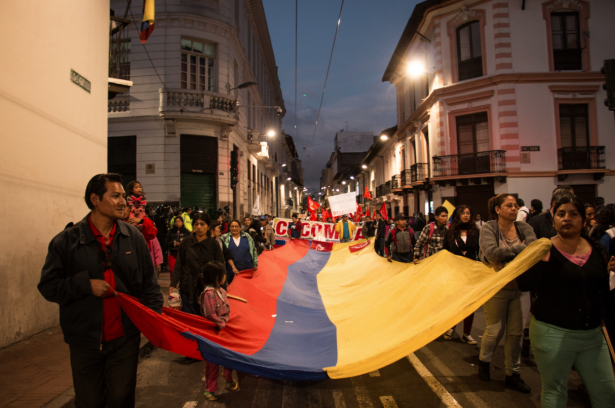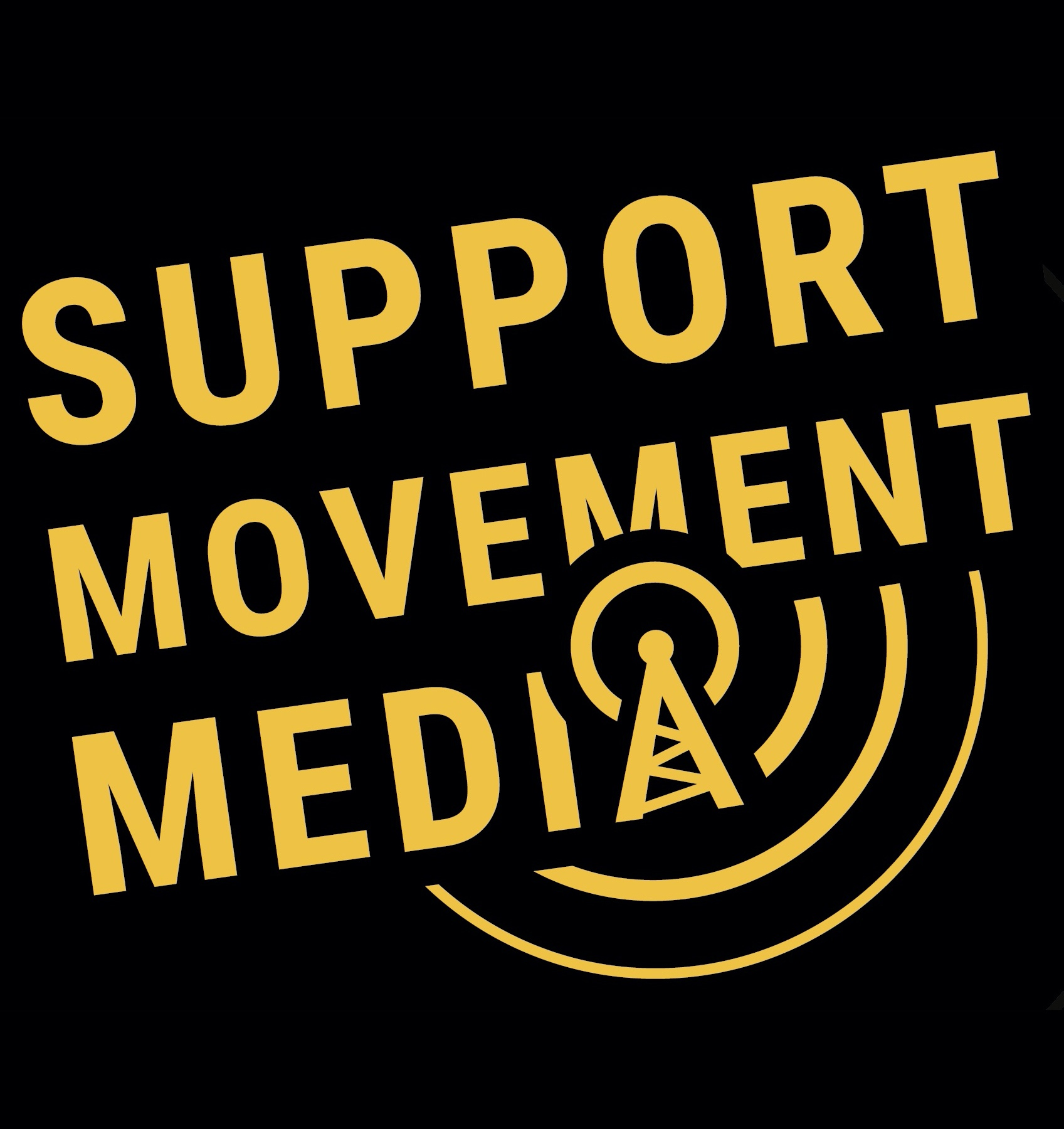As Colombians celebrate the election of the country’s first ever leftist leader — propelled to power in part by voters galvanized by the country’s massive protests last year — across the continent, Ecuadorian protesters are clashing with their government over the future they want to create.
For years, Ecuador’s Indigenous movement has contended with escalating crises. Not only was the country amongst the hardest hit by the COVID-19 pandemic, but fiscal policies implemented by President Guillermo Lasso — and compelled by an array of international and multinational lenders — have levied a disproportionate burden upon the country’s Indigenous population. Now, amidst widespread repression and clashes with police as protests enter their second week, demonstrators are refusing to back down.
Since demonstrations began on June 13, led primarily by the Confederation of Indigenous Nationalities of Ecuador, or CONAIE, thousands of Indigenous protesters have marched through the capital of Quito and other regions, demanding the government take action to lower fuel prices, address rampant inflation, cease plans to privatize public sectors and provide funding to public education. The protesters have been blocking highways, and in some cases, puncturing the wheels of buses, forcing passengers to walk.
Embed from Getty Images“We had to resort to resistance,” said Leonidas Iza, head of CONAIE, chiding Lasso’s conservative government last Monday for “putting in place more and more policies of death, which don’t allow us to sustain our small economies.”
While Ecuador was gravely affected by the COVID-19 pandemic, its economic recovery package was smaller than most in the region. It’s been hampered in part by massive debts owed to the International Monetary Fund, or IMF, which for years has required the country to abide by strict austerity measures under leftist and conservative leaders alike.
In 2019, the Indigenous movement in Ecuador fought successfully against an economic austerity package, including the removal of fuel subsidies, that former President Lenín Moreno developed to comply with an IMF loan. Demonstrations over the course of 11 days resulted in the deaths of 11 protesters, and more than 1,000 were injured, for which the government was never held accountable.
Previous Coverage
 Ecuador’s social movements push back against Correa’s neoliberalism
Ecuador’s social movements push back against Correa’s neoliberalismIn recent years, the quality of life for everyday Ecuadorians has deteriorated, and the cost of living has shot through the roof, particularly for the country’s 1.1 million Indigenous people. As of 2020, nearly three in five Indigenous Ecuadorians live in poverty, a level roughly double that of the general population.
Since the pandemic began, inflation has also increased, fuel prices have nearly doubled and over 65 percent of Ecuadorians remain unemployed or underemployed.
In response to the demonstrations, the Ecuadorian government declared a state of emergency in six provinces, allowing Lasso to deploy his armed forces and officers, equipped with anti-riot vehicles, tear gas and water cannons, against protesters. Since then, two protesters, one of whom had been struck in the head by a police tear gas canister, have been killed, and nearly 100 have been injured. Iza himself was also arbitrarily arrested and then released under public pressure.
Indigenous leaders have called for an end to the state of emergency and “demilitarization” as conditions for dialogue. However, Lasso’s government, which has accused CONAIE of attempting to foment a coup, has refused to end the order.
Well-known for its strategy of mobilizing public uprisings in favor of Indigenous land rights, environmental protection and socio-economic justice, CONAIE played an important role in protests leading to the ouster of three Ecuadorian presidents between 1997 and 2005.
“We cannot lift the state of exception because that would leave the capital defenseless,” said Minister Francisco Jimenez in an interview with Teleamazonas channel.

Support Us
Waging Nonviolence depends on reader support. Become a sustaining monthly donor today!
DonateFor now, Indigenous protesters and others have continued to defy government curfews and participate in direct action, as rising inflation, political dissatisfaction and growing momentum continue to fuel movements across the region.
In addition to former rebel Gustavo Petro’s victory in Colombia’s presidential election last week, Chile, Peru and Honduras all elected leftist presidents in 2021.
“This is our show of strength until the government listens,” protester Manuel Cocha told AFP, as he and dozens of other demonstrators blocked a highway south of Quito last week.

Sorry to say that your organization does not have a good grasp on the political situation here in Ecuador. Let me explain. Characterizing Rafael Correa’s 8 years as president (2008-2016) as “neoliberalism” is entirely inaccurate. Correa led a populist alliance (Alianza País) which executed important progressive changes, administrative reforms, and essential investments in social institutions (hospitals, schools, energy plants, highways) in Ecuador. After Correa, Lenin Moreno dismantled many of these investments–and Moreno is nationally recognized as a traitor to Alianza País and its program. The current president, Guillermo Lasso, is continuing Moreno’s neoliberal program. In fact, he worked with Moreno from 2019 to define the neoliberal program–the 2019 Consulta Popular, for example. Moreno and Lasso are the neoliberals, not Correa.
It’s almost unnecessary to state that the U.S. Department of State and other U.S. agencies were involved in the dismantling of Correa’s progressive program, and the continued FALSE attacks on the “correista” movement on the part the the right-wing, oligarchic Ecuadorian press, and other corporate media outlets.
Let me include the fact that the 2019 presidential candidate, Yaku Perez, was a complete creation of the U.S. Dept. of State (and other U.S. agencies), and was a completely fake “eco” candidate.
I have lived in Ecuador for 12 years, where I work as a professional translator, so I am well informed of the situation here. You do not have the facts straight in your article. Please get it right, and do not cast aspersions where they are not deserved. Based on your reporting here, I really wonder who you people are working for.